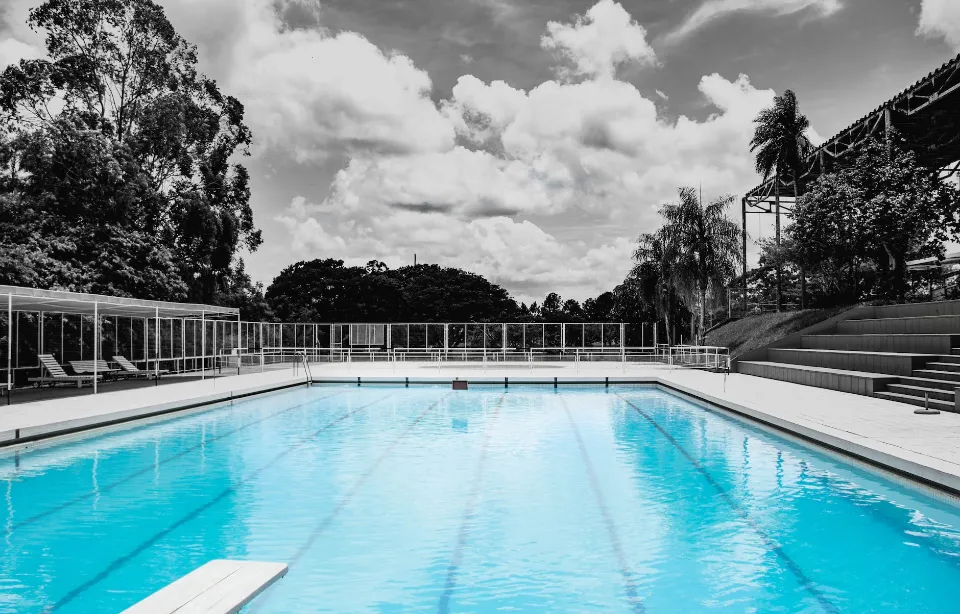How to Heat a Swimming Pool for Free – 2023 Guide
Swimming pools are a great addition to any home, but heating them can be a costly endeavor. Traditional pool heating methods, such as gas and electric heaters, can drive up your energy bills and put a dent in your wallet. However, there are ways to heat your swimming pool for free or at minimal cost.
In this article, we’ll explore some methods you can use to heat your swimming pool without spending a fortune.
How to Heat a Swimming Pool for Free?

Solar Pool Covers
One of the easiest and most affordable ways to heat your pool for free is by using a solar pool cover. These covers are made of a thick plastic material that absorbs sunlight and traps heat in the pool. They can raise the water temperature by up to 10 degrees Fahrenheit.
Solar pool covers work by trapping heat from the sun and transferring it to the water. The cover also prevents heat from escaping through evaporation, which is one of the primary ways heat is lost in a pool. By keeping the heat in, the cover helps maintain a warm temperature even on cooler days.
Passive Solar Heating
Passive solar heating involves using the sun’s energy to heat your pool without any mechanical or electrical components. This method requires a bit of planning and design but can be highly effective.
To use passive solar heating, you’ll need to place your pool in an area that receives a lot of sunlight. You’ll also need to install a system of pipes or tubes that will carry water from the pool to a collection area, such as a black plastic mat or a dark-colored container.
The water is then heated by the sun’s rays as it flows through the collection area and back into the pool. The process can be repeated several times throughout the day, resulting in a significant increase in temperature.
Wind Barriers

Wind can have a significant impact on the temperature of your pool. By creating a wind barrier around your pool, you can reduce the amount of heat lost to the surrounding air. This can be done by planting trees or installing fences or walls around the pool area.
Windbreaks can be particularly effective in colder climates where the wind chill factor can make the air feel much colder than the actual temperature. By blocking the wind, you can help retain the heat in the pool and reduce the amount of energy needed to maintain a comfortable temperature.
Geothermal Heating
Geothermal heating involves using the natural heat of the earth to warm your pool. This method is more expensive than some of the other options on this list but can be highly effective in certain circumstances.
To use geothermal heating, you’ll need to install a system of pipes or tubes beneath the ground around your pool. The pipes are filled with a special fluid that absorbs heat from the earth and transfers it to the water in the pool.
Geothermal heating can be highly effective in areas where the ground remains relatively warm throughout the year. The system can be costly to install, but it can provide a significant reduction in energy costs over time.
Heat Pumps
Heat pumps are an alternative to traditional gas or electric pool heaters. They work by extracting heat from the air or water and transferring it to the pool. This process requires much less energy than traditional heaters and can be highly efficient.
Heat pumps are most effective in areas with mild to moderate temperatures. In colder climates, they may not be as effective, as the air temperature may not be warm enough to extract heat. However, in warmer areas, heat pumps can be a highly effective and efficient way to heat your pool.
Which Method is Better to Use?
Heating a swimming pool can be a costly endeavor, but it doesn’t have to be. By using one or more of the methods outlined in this article, you can significantly reduce your energy costs and enjoy a warm pool all year round. Whether you opt for a solar cover, passive solar heating, wind barriers, geothermal heating, or heat pumps, each method has its own advantages and disadvantages.

Solar pool covers and passive solar heating are the most affordable and straightforward options, requiring no extra equipment or installations. Wind barriers are a simple yet effective solution that can be implemented with minimal cost. Geothermal heating and heat pumps are more expensive but can provide long-term cost savings.
It’s important to note that while these methods can help reduce your energy costs, they may not be able to heat your pool to the desired temperature on their own. To get the most out of these methods, you may need to combine them with other heating options or adjust your expectations for the temperature of your pool.
In addition to these methods, there are other ways to conserve energy and reduce the cost of heating your pool. For example, keeping your pool covered when not in use can help reduce evaporation and heat loss. Additionally, lowering the temperature of your pool by just a few degrees can result in significant energy savings over time.

Conclusion
In conclusion, heating your swimming pool for free or at minimal cost is possible with the right methods and strategies. By using solar pool covers, passive solar heating, wind barriers, geothermal heating, or heat pumps, you can reduce your energy bills and enjoy a warm and comfortable pool all year round. Remember to also implement other energy-saving practices to maximize your cost savings and minimize your environmental impact.
